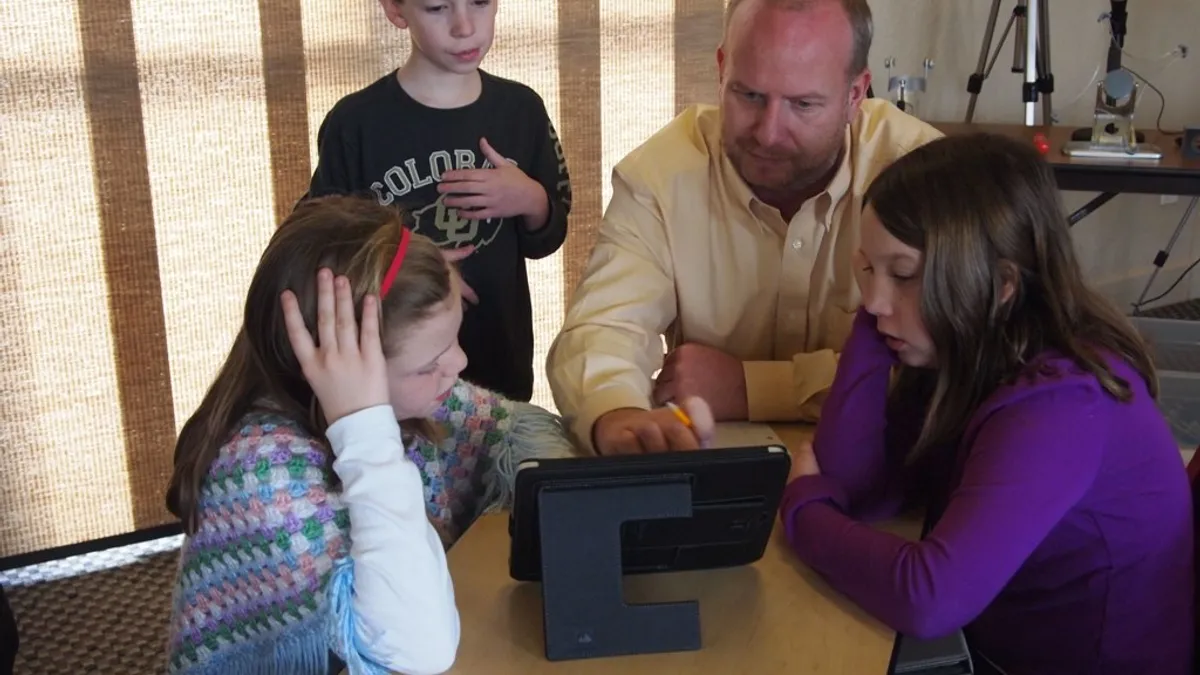Dive Brief:
- Though schools are becoming more connected than ever, with 94% of districts reporting adequate access to high-speed internet, and devices are expanding learning opportunities with a variety of engaging digital resources, the homework gap continues to be a persistent problem, according to EdTech: Focus on K-12.
- Data from the Pew Research Center shows that five million families in the U.S. with school-aged children still don't have broadband access at home, presenting a challenge for students expected to complete web-based homework in classes that have gone digital.
- Districts are working to address this issue with solutions that include parking WiFi-enabled buses in strategic locations around communities and letting students check out WiFI hotspots they can take home with them. Initiatives like The 1 Million Project are also helping districts expand access.
Dive Insight:
While schools have made leaps and bounds in providing students access to digital devices and reliable high-speed broadband on school grounds, it can be easy to overlook that many students — particularly those from economically disadvantaged backgrounds and those in rural locations where service providers have yet to fully expand infrastructure — still lack that access at home. This, of course, presents problems when students are assigned homework that requires the use of the internet, as those lacking home access are automatically at a disadvantage.
Previously, Democratic FCC Commissioner Jessica Rosenworcel had suggested potentially expanding the agency's E-rate program to help guarantee home connectivity for students, but those hopes may be unlikely under the current administration. When planning device programs, digital resource rollouts and the accompanying curriculum, districts will have to continue keeping the homework gap in mind while potentially seeking community partners, both non- and for-profit, to help level the playing field in these scenarios.







 Dive Awards
Dive Awards






